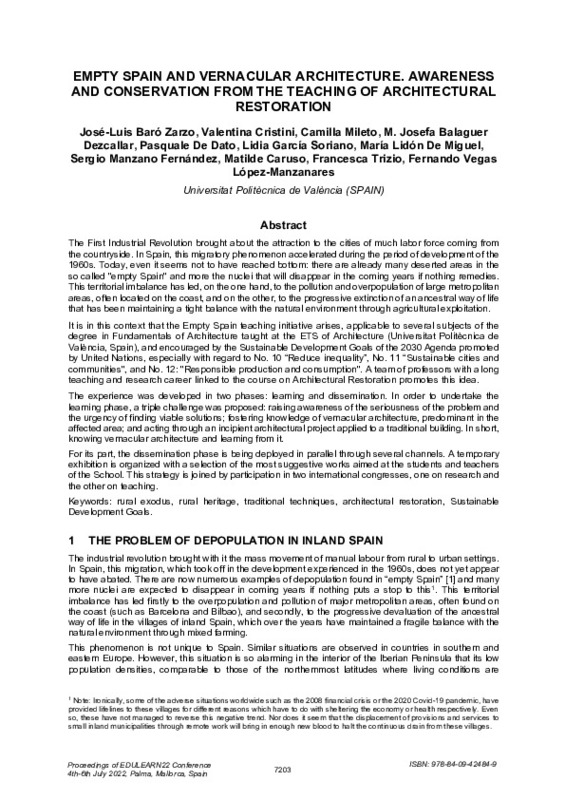JavaScript is disabled for your browser. Some features of this site may not work without it.
Buscar en RiuNet
Listar
Mi cuenta
Estadísticas
Ayuda RiuNet
Admin. UPV
Empty Spain and vernacular architecture. Awareness and conservation from the teaching of architectural restoration
Mostrar el registro completo del ítem
Baró Zarzo, JL.; Cristini, V.; Mileto, C.; Balaguer Dezcallar, MJ.; De Dato, P.; García-Soriano, L.; Lidón De-Miguel, M.... (2022). Empty Spain and vernacular architecture. Awareness and conservation from the teaching of architectural restoration. IATED. 7203-7208. https://doi.org/10.21125/edulearn.2022.1685
Por favor, use este identificador para citar o enlazar este ítem: http://hdl.handle.net/10251/191306
Ficheros en el ítem
Metadatos del ítem
| Título: | Empty Spain and vernacular architecture. Awareness and conservation from the teaching of architectural restoration | |
| Autor: | ||
| Entidad UPV: |
|
|
| Fecha difusión: |
|
|
| Resumen: |
[EN] The First Industrial Revolution brought about the attraction to the cities of much labor force coming from
the countryside. In Spain, this migratory phenomenon accelerated during the period of development of the
1960s. ...[+]
|
|
| Palabras clave: |
|
|
| Derechos de uso: | Reserva de todos los derechos | |
| ISBN: |
|
|
| Fuente: |
|
|
| DOI: |
|
|
| Editorial: |
|
|
| Versión del editor: | https://doi.org/10.21125/edulearn.2022.1685 | |
| Título del congreso: |
|
|
| Lugar del congreso: |
|
|
| Fecha congreso: |
|
|
| Tipo: |
|









